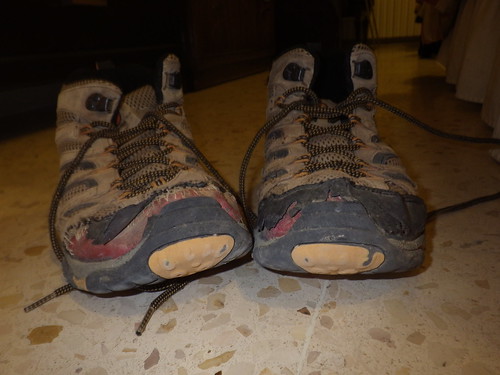This article on Americanisms appeared in the BBC News Magazine yesterday. I'm not what you'd call a "language expert," and I probably wouldn't comment on this article here, except that the author (I can't find a byline anywhere), Matthew Engel, makes a claim at the beginning that seems both too good to check and like something you could easily check over your morning coffee. So I decided, since my university library provides access to the OED, to spoil everyone's fun and check it while drinking my morning coffee. That claim, if you haven't read the article yet, is that five words listed at the beginning of the article "were never part of the English language until the establishment of the United States."Never? Well, here's what I found (all information from the OED, should you want to check). "Lengthy" does, indeed, seem to be an Americanism; the earliest example the OED gives is from the diary of John Adams in 1759. We're off to a good start.Engel proves to be less reliable (get it?) with the next four, however. "Reliable" has, in fact, been a part of the English language since the mid-16th century according to the OED, although it seems to have become rare for a few centuries and then made a comeback as an Americanism. Nonetheless, Engel is technically incorrect; the word predates the establishment of the United States. "Talented" is, arguably, even older, although its 15th century usage relies on an archaic meaning of "talent." Still, the earliest examples of the modern sense are all British, and one, with a similar but slightly different sense, is from the early 17th century. "Influential," again, predates the United States. The earliest example the OED gives is from an Anglican sermon in the mid-17th century, although this is in the sense of being influential on something. The first use in the sense of "an influential person" is from the early 18th century, and, of course, by a British man. "Tremendous," in the sense of something awful, also dates back to the early 17th century, and the OED examples for this use are British. The hyperbolic sense that we use it in now is later – early 19th century – but the earliest usages are, somewhat predictably, British. I guess one out of five isn't too bad.Engel fares a little better with the rest of the words in the article, although there are still quite a few that don't meet the initial claim. I'm also a little skeptical of the statement at the end of the article that modern British English is the "original version" of the language, though. Do the British still use thorn and wynn when we Americans aren't looking?Edit (07/16/2011): Looks like Mark Liberman, who actually is a language expert, covered this piece this morning over at Language Log, complete with an explanation of why it doesn't really matter whether or not the claims Engel makes are actually true.

